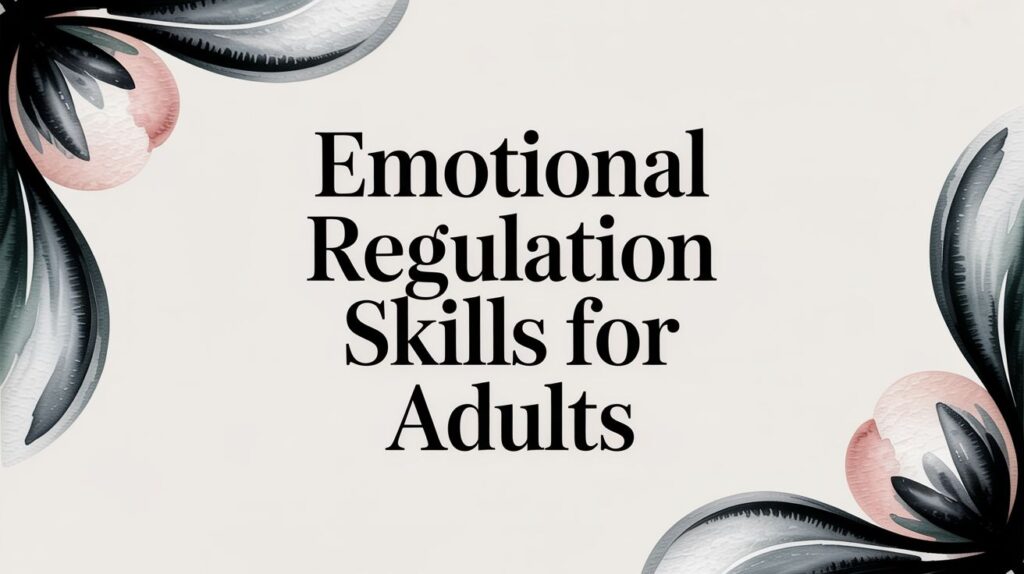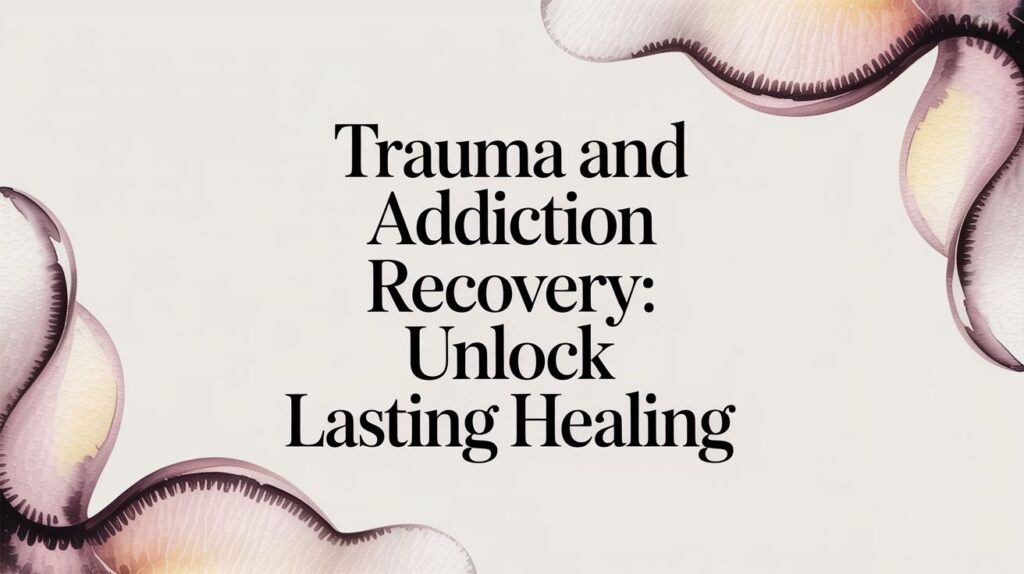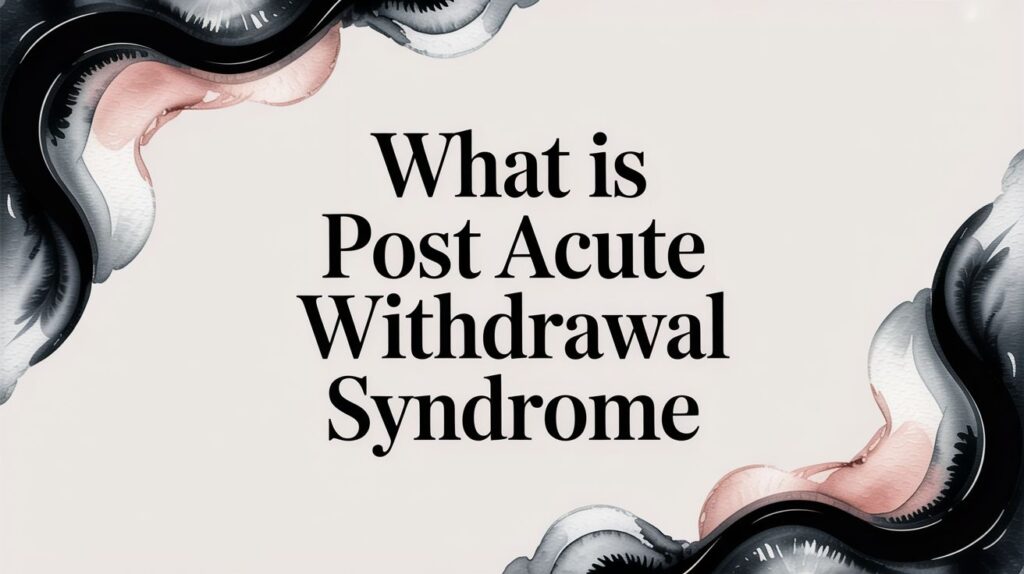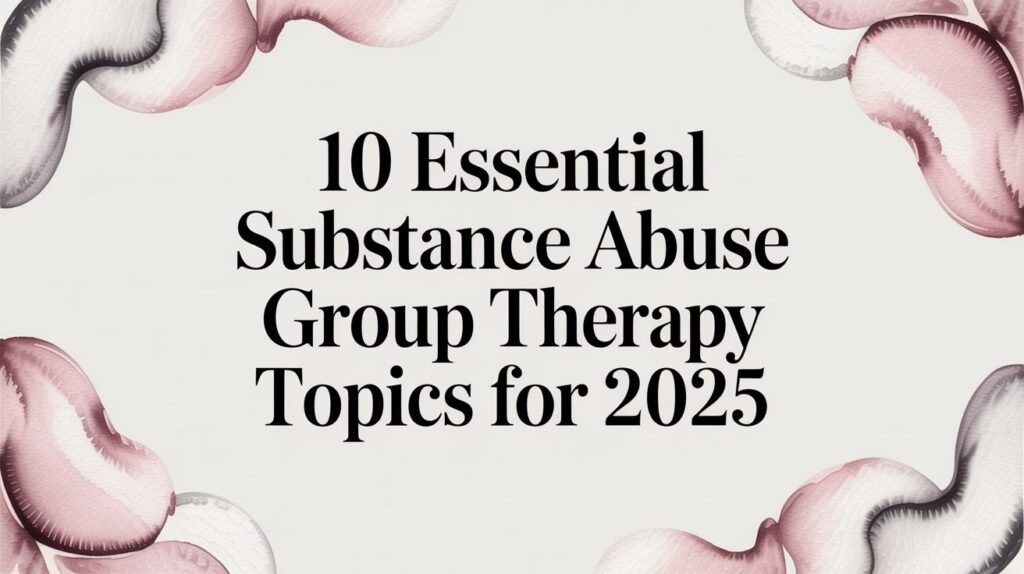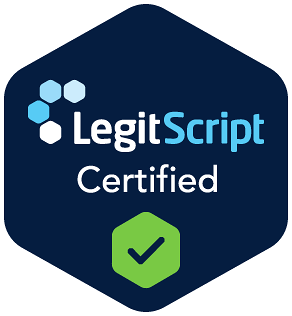Dialectical Behavior Therapy, better known as DBT, is a powerful, evidence-based therapy designed to help you master your emotions rather than feel controlled by them. It’s an active, skills-based approach for building a life you genuinely want to live, focusing on the delicate balance between accepting yourself as you are and making positive changes.
Understanding Dialectical Behavior Therapy

Imagine trying to navigate a stormy sea without a rudder. Intense emotions can feel just like that—unpredictable, overwhelming, and powerful enough to pull you completely off course. Dialectical Behavior Therapy provides both the rudder and the skills to navigate those turbulent waters. It’s a hands-on approach that teaches you a new emotional language, one that helps translate chaotic feelings into understandable actions and choices.
DBT was originally developed in the late 1980s by psychologist Marsha M. Linehan. She found that traditional cognitive-behavioral therapy (CBT) wasn't quite hitting the mark for individuals with borderline personality disorder (BPD) who struggled with intense suicidal thoughts and self-harm. So, she adapted it.
The key was in the name she chose: "dialectical." This word highlights the therapy's unique foundation: holding two seemingly opposite ideas as true at the same time. The big one? Balancing radical acceptance of who you are right now with the motivation to change your behaviors for a better future.
The Core Idea: Balancing Acceptance and Change
What truly sets DBT apart is its central "dialectic." This is the revolutionary idea that acceptance and change aren't enemies; they're partners in healing. Many therapies focus almost exclusively on changing thoughts and behaviors. While well-intentioned, this can sometimes feel invalidating, as if your current pain isn't being heard or respected.
DBT flips the script. It starts from a place of radical acceptance, validating your emotions and experiences without judgment. From that stable, non-shaming foundation, it then equips you with practical, real-world skills to make meaningful changes. This dual approach helps you break free from painful cycles by both honoring your present reality and empowering you to build a new one.
This approach shares core principles with other healing methods. For instance, you can learn more about how validation and safety are central to effective treatment in our guide to what is trauma-informed therapy.
To give you a clearer picture, here’s a quick summary of DBT's foundational principles.
DBT At A Glance: Core Principles
| Principle | Brief Explanation |
|---|---|
| Dialectics | The core idea that two opposing truths (like acceptance and change) can coexist and be integrated for better health. |
| Validation | Acknowledging that your emotions and experiences are real, understandable, and valid, without necessarily agreeing. |
| Skills Training | Actively teaching practical skills in mindfulness, emotion regulation, distress tolerance, and interpersonal skills. |
| Problem-Solving | A structured approach to identifying behavioral patterns, analyzing triggers, and finding effective solutions. |
| Radical Acceptance | The practice of fully accepting reality as it is, without judgment, which is the first step toward reducing suffering. |
This blend of acceptance and action is what makes DBT so effective, especially for those who feel stuck in patterns of emotional dysregulation.
DBT is built on the belief that you are doing the best you can, and you need to learn new behaviors to do even better. It removes shame from the equation and replaces it with skills and empowerment.
By addressing the root issues, DBT helps individuals:
- Understand and manage powerful emotions without being swept away by them.
- Reduce impulsive or self-destructive behaviors by learning healthier coping skills.
- Improve relationships by learning to communicate needs more effectively.
- Cultivate mindfulness to stay grounded in the present moment instead of being pulled into past regrets or future anxieties.
The Power of Acceptance and Change in DBT

The real engine driving Dialectical Behavior Therapy is its core philosophy: the powerful, dynamic balance between acceptance and change. Think of a tightrope walker, perfectly poised high above the ground. On one side is radical acceptance—the practice of fully embracing your reality, thoughts, and emotions without fighting them. On the other side is a firm commitment to change—the active work of building a life you truly want to live.
This "dialectic" isn't a conflict; it’s a partnership. Therapies that focus only on change can sometimes feel invalidating, as if your current pain isn't being taken seriously. But a therapy focused only on acceptance can lead to stagnation, leaving you feeling stuck. DBT brilliantly weaves these two together.
You learn to validate your own feelings and experiences (acceptance) while simultaneously gaining the skills to create new, healthier patterns (change). This unique balance is the key to breaking free from cycles of emotional pain and avoiding the frustration that can derail progress.
Radical Acceptance: The First Step to Freedom
The idea of radical acceptance can feel backward at first. Why would you accept a situation or a feeling that causes you immense pain? The answer lies in the huge difference between acceptance and approval. Accepting something doesn’t mean you like it, want it, or agree with it. It just means you stop fighting reality.
Imagine being caught in quicksand. Your gut instinct is to struggle and thrash around, but that only makes you sink faster. The only way to survive is to stop fighting, relax your body, and spread your weight to float. Radical acceptance is that moment of stopping the fight.
By radically accepting our current reality, we stop draining our energy on fighting what already is. This frees up that energy so we can focus on what we can control and what we can change for the better.
This shift in perspective is profound. It moves you from a place of suffering ("This shouldn't be happening!") to a place of action ("This is happening. So, what can I do now?").
Embracing Change: Building a Life Worth Living
Once you've anchored yourself in acceptance, the work of change can truly begin. This isn't about becoming a different person; it's about building a life that feels authentic and meaningful to you. DBT provides the tools—the skills—to make this happen.
This process involves a few key steps:
- Identifying Problematic Behaviors: You learn to pinpoint the specific actions and reactions that are making your life more difficult or keeping you from your goals.
- Understanding Triggers: You dig into what situations, thoughts, or emotions kick off these behaviors.
- Learning New Skills: This is where you replace old, ineffective coping mechanisms with new, healthy ones from the four DBT modules.
- Practicing Consistently: Real change takes practice. DBT helps you apply these new skills in real-world situations, building your confidence and mastery over time.
This structured approach turns the vague desire to "get better" into a concrete, actionable plan. It’s empowering because it shows you that you have the capacity to change your own life, one skill at a time. The blend of acceptance and change is a core concept shared across many modern therapies. For another perspective on integrating these ideas, you might want to explore Acceptance and Commitment Therapy (ACT).
How Acceptance and Change Work Together
Let’s use a real-world example. Imagine someone who struggles with intense anger that damages their relationships. A purely change-focused approach might say, "Just stop getting angry." This usually leads to shame and failure when the anger inevitably returns.
A purely acceptance-focused approach might say, "It's okay that you feel angry." While validating, this doesn't help the person stop the destructive behaviors that come from that anger.
DBT integrates both:
- Acceptance: "I accept that I am feeling intense anger right now. My feelings are valid, and they are a response to a trigger. I will not judge myself for feeling this way."
- Change: "Even though my anger is valid, yelling and saying hurtful things is not effective and damages my relationships. I will use a distress tolerance skill to calm myself down before I react."
This dual approach validates the internal experience while empowering the individual to choose a more effective external behavior. It breaks the cycle of reactive emotion followed by shame, replacing it with mindful, skillful action. This balance is what makes DBT both deeply compassionate and highly effective. It honors where you are while building a clear path toward where you want to be.
Your Toolkit: The Four Core DBT Skills
Dialectical Behavior Therapy isn't just a philosophy about balancing acceptance and change; it's a practical, hands-on approach. It gives you a concrete toolkit for building real emotional resilience.
Think of it as learning four distinct but interconnected sets of skills, each designed to help you navigate specific challenges. These four modules—Mindfulness, Distress Tolerance, Emotion Regulation, and Interpersonal Effectiveness—are the heart of what makes DBT work so well.
Together, they create a complete system for understanding your inner world, surviving painful moments without making them worse, managing the waves of your emotions, and building healthier connections with others. These aren't just abstract ideas; they're skills you can actually learn and use to build a more balanced life.
Mindfulness: The Foundation of Awareness
Before you can change how you relate to your emotions, you first have to notice them without judgment. That's where Mindfulness comes in. It’s the bedrock on which all the other DBT skills are built.
In DBT, mindfulness simply means paying attention to what’s happening right now, on purpose, without getting tangled up in criticism or overthinking it. It’s about observing your thoughts, feelings, and physical sensations as they come and go, like clouds passing in the sky.
You learn to notice them without immediately slapping a "good" or "bad" label on them. This creates a tiny but powerful pause between feeling something and acting on it, giving you the space you need to choose your response instead of just reacting.
The core mindfulness skills are often broken down into the "What" and "How" skills:
- "What" Skills (Observe, Describe, Participate): This is what you actually do to be mindful. You learn to simply observe what’s happening inside and out, describe it using neutral words, and participate fully in the moment you’re in.
- "How" Skills (Non-judgmentally, One-mindfully, Effectively): This is how you approach the practice. You do it non-judgmentally (letting go of criticism), one-mindfully (focusing on one thing at a time), and effectively (doing what works to reach your goals).
This visual does a great job of showing how these core DBT principles build on that foundation of awareness.
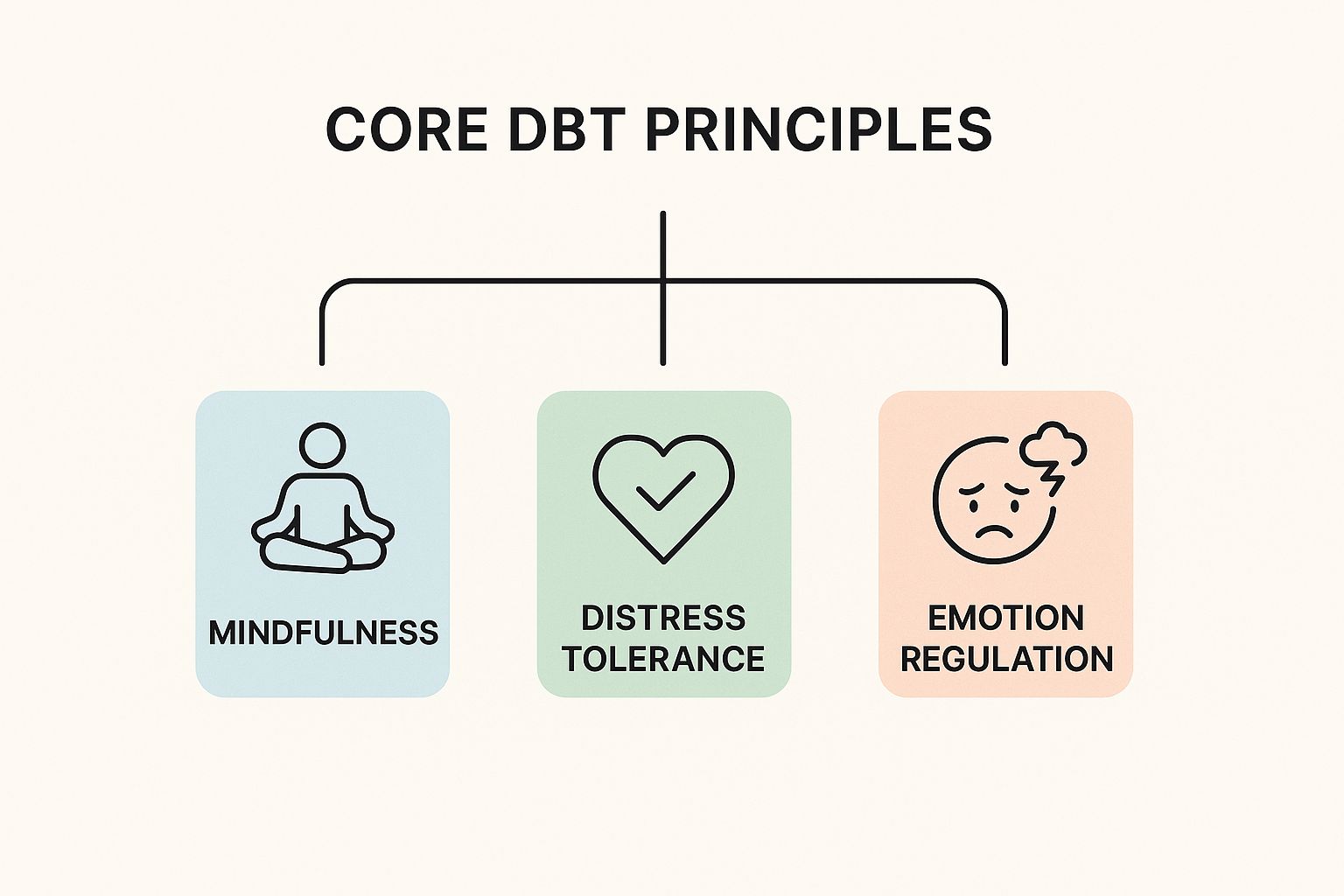
As you can see, Mindfulness acts as the base, allowing skills like Distress Tolerance and Emotion Regulation to be used effectively when you need them most.
Distress Tolerance: Surviving the Storm
What do you do when you’re slammed with an emotional crisis that feels completely overwhelming? Distress Tolerance skills are your emotional first-aid kit. They’re designed to help you get through intense, painful moments without making the situation worse by acting on impulse.
This isn’t about pretending the pain isn’t there or trying to make it vanish. It’s about learning to tolerate it until it naturally passes. Think of it like treading water in a stormy sea—your goal isn’t to stop the waves, but to stay afloat until you reach calmer water.
The core idea of Distress Tolerance is accepting reality for what it is in the moment, even when it’s painful, and finding ways to get through it without acting on urges you’ll regret later.
Some of the most powerful Distress Tolerance skills include:
- TIPP: This is a powerhouse acronym for Temperature, Intense exercise, Paced breathing, and Paired muscle relaxation. These techniques use your body's own biology to quickly calm a nervous system that’s in overdrive.
- Distraction: Using activities, thoughts, or sensations to temporarily pull your focus away from the emotional pain. It could be as simple as watching a movie, calling a friend, or holding an ice cube.
- Self-Soothing: Actively comforting yourself using your five senses—sight, sound, smell, taste, and touch. This might look like lighting a favorite candle, listening to calming music, or wrapping up in a soft blanket.
- Radical Acceptance: This is the skill of fully and completely accepting reality for what it is, without fighting against it or wishing it were different.
Emotion Regulation: Managing Your Emotional Waves
While Distress Tolerance is for surviving a crisis, Emotion Regulation skills are for the day-to-day work of managing your feelings. This module helps you understand your emotions, dial down their intensity, and change unwanted emotional patterns over the long haul.
It’s about learning to be the surfer who rides the emotional waves, rather than the person getting crushed by them.
This starts with something as simple as identifying and labeling what you're actually feeling. Instead of just "feeling bad," you learn to pinpoint if it's sadness, anger, fear, or guilt. Every emotion is sending you a message, and understanding that message is the first step toward managing it effectively.
Key strategies for Emotion Regulation include:
- Understanding Your Emotions: Learning what purpose each emotion serves and what situations tend to trigger them for you.
- Reducing Vulnerability: Taking care of your physical self through balanced eating, consistent sleep, and exercise to build a more resilient emotional baseline.
- Opposite Action: When an emotion triggers an unhelpful urge (like the urge to isolate when you feel sad), this skill involves doing the exact opposite to counteract the feeling.
Interpersonal Effectiveness: Building Better Relationships
The final module, Interpersonal Effectiveness, is all about how you navigate your relationships. Intense emotions can make communication a minefield, making it tough to express your needs, set boundaries, or handle conflict without damaging your connections—or your self-respect.
These skills provide a clear blueprint for healthier interactions. The goal is to get your needs met while also maintaining your relationships and preserving your sense of self. It teaches a balanced approach that is assertive and clear—not too passive, not too aggressive.
Many of these DBT skills, like mindfulness and distress tolerance, are invaluable when it comes to developing practical strategies for managing stress in both relationships and daily life.
By mastering these four modules, you can move from a state of emotional chaos to one of mindful awareness, genuine resilience, and stronger connections.
Who Can Benefit From DBT?
When Dialectical Behavior Therapy was first developed, it was designed specifically for individuals with borderline personality disorder (BPD). But over the years, its powerful, practical toolkit has proven to be a game-changer for a much wider range of people.
At its core, DBT is all about learning to manage intense emotions and stop self-destructive behaviors. This central challenge, known as emotional dysregulation, is the common thread tying together many different mental health struggles.
Think of emotional dysregulation like a faulty internal thermostat. It can’t properly regulate your emotional temperature, sending you into extreme highs, painful lows, and reactions that feel completely out of proportion to the situation. DBT works by helping you repair that thermostat, giving you the skills to find balance and stability. This makes it an incredibly versatile and effective therapy for anyone whose life feels hijacked by their own feelings.
Beyond Borderline Personality Disorder
Both research and real-world clinical practice have shown that DBT is highly effective for a whole host of conditions. Its focus on practical, concrete skills provides a clear roadmap for people who feel trapped by their emotional experiences.
DBT can make a significant difference for individuals struggling with:
- Substance Use Disorders (SUD): Addiction often involves impulsive behaviors and using substances to numb painful emotions. DBT provides tangible distress tolerance skills that serve as healthier, more effective alternatives during a crisis.
- Eating Disorders: Conditions like bulimia nervosa and binge eating disorder are frequently driven by overwhelming emotional pain and a desperate need for control. DBT helps people learn to tolerate distressing feelings without turning to harmful eating behaviors.
- Post-Traumatic Stress Disorder (PTSD): Trauma can leave the nervous system stuck on high alert, creating a constant state of anxiety, anger, and fear. DBT’s mindfulness and emotion regulation skills help individuals feel safe inside their own skin again.
- Chronic Depression and Anxiety: For those caught in cycles of hopelessness or panic, DBT offers tools to challenge negative thought patterns and regulate the intense emotions that fuel these conditions.
The structured, skills-based design of DBT makes it a powerful intervention for these issues and many others.
Co-Occurring Disorders: A DBT Specialty
Many people are fighting a battle on two fronts: a substance use disorder and another mental health condition at the same time. This is what experts call a dual diagnosis or co-occurring disorder. For example, someone might be struggling with both alcoholism and major depression, where each condition feeds the other, creating a vicious cycle.
DBT is exceptionally well-suited to break this cycle. Instead of trying to treat each issue separately, it targets the underlying emotional dysregulation that often fuels both problems. By learning to manage intense emotions, a person is better equipped to resist cravings and cope with depressive symptoms.
A person in recovery might feel a sudden wave of shame (a mental health trigger), which sparks an immediate urge to use (a substance use response). DBT provides the skills to sit with that feeling of shame without acting on the urge, effectively breaking the chain reaction.
This integrated approach is critical for lasting recovery. To learn more about how this works, check out our guide on integrated dual diagnosis treatment and how it tackles both addiction and mental health together.
Is DBT Right for You?
Ultimately, you don’t need a specific diagnosis to get something out of DBT. The therapy is for anyone who feels like their emotions are in the driver’s seat, steering them toward decisions and behaviors they later regret.
Ask yourself if any of these sound familiar:
- Chaotic Relationships: Do you find yourself in frequent, intense conflicts with the people you care about?
- Extreme Mood Swings: Do your emotions shift from one extreme to another, leaving you and others feeling confused?
- Impulsive or Self-Destructive Habits: Do you act on impulse in ways that cause harm, like with spending, substance use, or self-harm?
- A Persistent Feeling of Emptiness: Do you struggle with a chronic sense of being empty or not really knowing who you are?
If these challenges hit home, DBT could provide the structure, support, and skills you need to build a life that feels more stable, predictable, and fulfilling. It offers a clear, actionable roadmap for moving from a life of quiet desperation to one of intentional action and emotional balance.
What a DBT Program Actually Looks Like
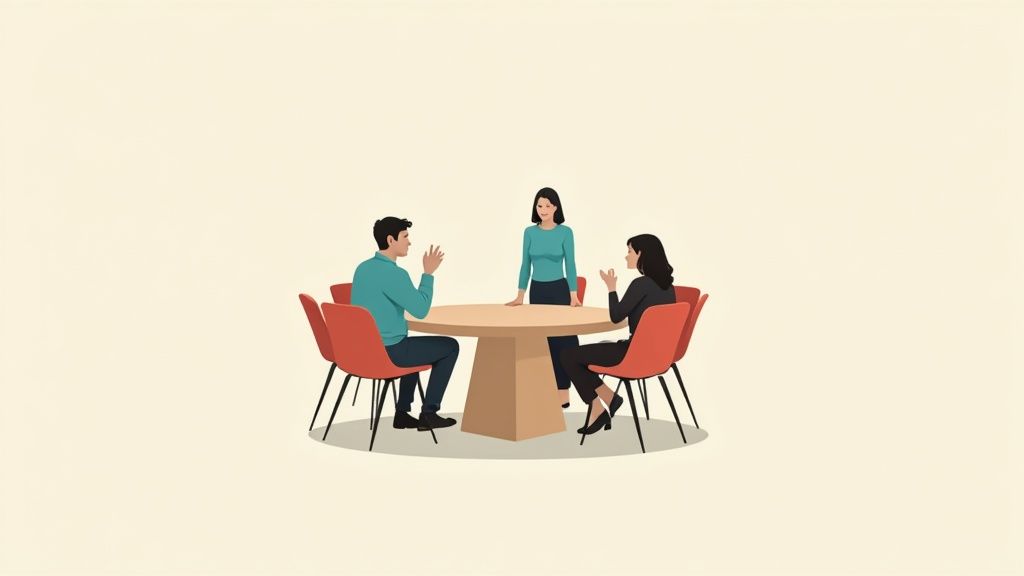
Understanding the philosophy behind Dialectical Behavior Therapy is one thing, but picturing yourself in a program is another. What does it actually feel like? A true DBT program is much more than a standard weekly therapy appointment; it’s a multi-layered support system built to help you use new skills in the real world, where life actually happens.
Instead of a single line of defense against old habits, DBT wraps you in a complete support network. It’s structured this way because real, lasting change demands consistent practice and guidance, both inside and outside the therapist’s office.
This unique structure is what makes DBT so effective. It’s built on four core components that work in tandem to create a solid framework for healing and growth. Let's pull back the curtain on what you can expect from each piece of a standard DBT program.
Individual Therapy Sessions
The first pillar is weekly individual therapy. This is your dedicated, one-on-one time with a DBT-trained therapist—a private, focused space to tackle your specific challenges and goals. These sessions are highly structured and laser-focused on progress.
You’ll typically use a tool called a diary card to track your emotions, urges, and the skills you used (or struggled to use) during the week. This card isn't just busywork; it becomes the roadmap for your session, helping you and your therapist zero in on the most pressing issues to work on.
The main event here is problem-solving. Together, you’ll break down situations where you felt stuck, figure out what went wrong, and strategize how to apply DBT skills more effectively the next time around.
Group Skills Training
The second component is the weekly group skills training. This is where you actually learn the core skills from the four modules: Mindfulness, Distress Tolerance, Emotion Regulation, and Interpersonal Effectiveness. Think of it as a practical, hands-on class for your emotional life.
These sessions are run more like a workshop than a traditional process group where people discuss personal issues at length. The format usually looks like this:
- Mindfulness Practice: Most sessions kick off with a brief mindfulness exercise to help everyone get centered and present.
- Homework Review: Members share quick, practical examples of how they practiced the previous week’s skill.
- New Skill Introduction: The group leader teaches a new skill, walking everyone through explanations, real-world examples, and worksheets.
This group setting creates a powerful, supportive environment where you learn alongside others on a similar path. It normalizes the struggle and builds a shared sense of purpose.
In-the-Moment Phone Coaching
So, what happens when a crisis blows up between your appointments? This is where DBT’s third component, phone coaching, becomes a game-changer. It’s one of the most distinctive and supportive parts of the entire treatment.
This isn’t a substitute for a full therapy session. Instead, it’s a quick, focused call with your therapist designed to help you use your DBT skills in real-time—right when you need them the most.
Phone coaching is your lifeline. It's designed to help you generalize skills from the therapy room to the real world, empowering you to navigate a crisis effectively instead of falling back on old, unhelpful behaviors.
For example, if you’re hit with an overwhelming urge to engage in a destructive behavior, you can call your therapist for immediate guidance on which Distress Tolerance skill to use in that exact moment.
Therapist Consultation Team
The final component is one you’ll never see, but it’s absolutely critical to the quality of your care. Every DBT therapist is required to be part of a consultation team—a group of fellow DBT clinicians who meet every week.
This team serves two key purposes. First, it ensures your therapist is delivering the most effective treatment possible by holding them accountable to the proven DBT model. Second, it provides crucial support for the therapists themselves, helping them manage the emotionally demanding nature of the work so they can stay sharp and effective for their clients.
It’s a built-in quality control and support system that works behind the scenes to directly benefit you.
How to Find a DBT Therapist and Get Started
Feeling ready to move forward is a huge milestone. Deciding to turn what you've learned about Dialectical Behavior Therapy into real action is an empowering choice. This guide gives you clear, practical steps to find a qualified DBT therapist or a certified program that can make a real difference.
The first step is knowing what you're actually looking for. It's a common misconception that any therapist who teaches a few DBT skills is running a true DBT program. They're not the same.
A comprehensive, evidence-based DBT program always includes four core components: individual therapy, group skills training, phone coaching for in-the-moment crises, and a therapist consultation team. As you start your search, focus on clinicians or centers that explicitly offer this complete structure.
Key Credentials to Look For
Finding the right person is absolutely crucial for your success. To make sure you're getting high-quality, effective care, keep an eye out for these specific credentials and training backgrounds.
Licensed Therapists: First and foremost, make sure any potential therapist is a licensed mental health professional. This could be a psychologist (Ph.D., Psy.D.), a licensed clinical social worker (LCSW), or a licensed professional counselor (LPC).
DBT-Linehan Board Certification: This is the gold standard. Certification through the DBT-Linehan Board of Certification is the most rigorous credential a therapist can earn, showing they've met the highest possible standards for training and are sticking to the model as it was designed to work.
Intensive Training: At a minimum, look for providers who have finished intensive or foundational training in DBT from well-known organizations. This signals a deep commitment to the therapy beyond just surface-level knowledge.
Questions to Ask a Potential Provider
Once you've found a therapist or program that seems promising, it’s vital to ask the right questions to see if it’s a good fit for you. Think of it as an interview—you're hiring them for a very important job. This initial chat can reveal a lot about their approach and whether it aligns with what you need.
Asking direct questions empowers you to be an active participant in your own care. It helps you find a provider who is not just qualified, but is the right partner for your specific journey toward building a life worth living.
Here are a few questions you should consider asking:
- Do you offer all four modes of comprehensive DBT? (That's the individual, group, phone coaching, and consultation team we talked about.)
- What is your specific training and experience in DBT?
- How do you use diary cards in your individual sessions? (This is a core tool, and their answer will tell you a lot.)
- What is your policy for phone coaching between sessions?
Taking this first step might feel intimidating, but it's a powerful move toward regaining control and building a more stable, fulfilling life. If you're also trying to figure out how to help a loved one through their own journey, learning how to support someone in recovery can provide valuable insights for you and your whole family.
DBT: Your Questions Answered
If you're exploring therapy options, it’s natural to have questions. Dialectical Behavior Therapy (DBT) is a powerful approach, but it comes with its own terms and structure. Let's clear up a few of the most common questions people ask.
How Is DBT Different From CBT?
This is a fantastic question, and the answer gets to the heart of what makes DBT so unique. While DBT is a type of Cognitive Behavioral Therapy (CBT), its secret sauce is acceptance.
Think of it this way: traditional CBT focuses on changing negative thoughts and behaviors. DBT absolutely does that, too, but it adds a crucial first step—mindfulness and validation. It teaches you to accept your emotions and your reality without judgment before you start working to change them. This powerful blend of acceptance and change is the "dialectic" that makes the therapy so effective for intense emotional storms.
How Long Does DBT Treatment Usually Last?
A standard, comprehensive DBT program typically runs for about six months to one year. That timeline isn't arbitrary; it’s designed to give you enough time to truly learn, practice, and weave all four skill modules into your daily life.
The exact duration can shift based on your specific needs, the program's structure, and the challenges you're working through.
The goal of DBT isn't just to learn skills in a therapy room but to build a life worth living outside of it. The treatment length is designed to support that deep, lasting integration.
Is Dialectical Behavior Therapy Effective?
Yes, without a doubt. DBT is recognized as a highly effective, evidence-based treatment backed by decades of research.
Numerous studies have proven its success in reducing self-harm, suicidal thoughts, and hospitalizations, especially for people with Borderline Personality Disorder. Its effectiveness also extends to treating substance use disorders, eating disorders, and PTSD. DBT skills are also vital for improving how we manage recovery and relationships by fostering healthier communication and emotional regulation.
At Altura Recovery, we know that finding the right therapeutic fit is one of the most important steps you'll take. Our expert clinicians are trained in DBT to help you build the skills for lasting emotional balance and a sustainable recovery. To learn how our personalized outpatient programs can support you, visit https://www.alturarecovery.com.



